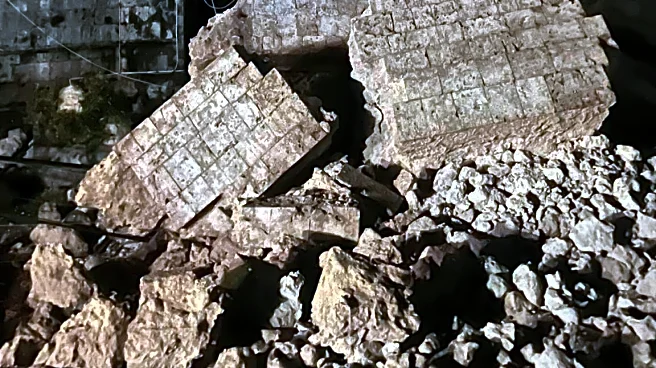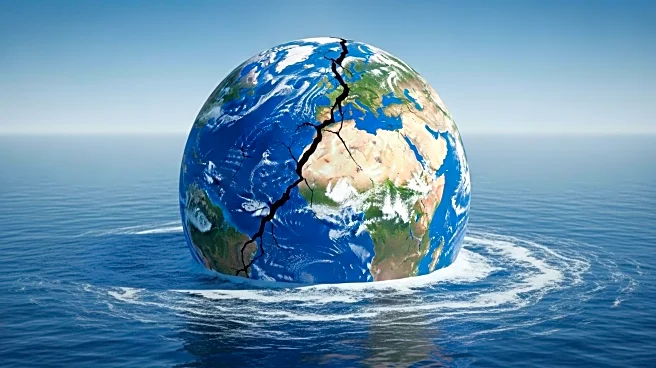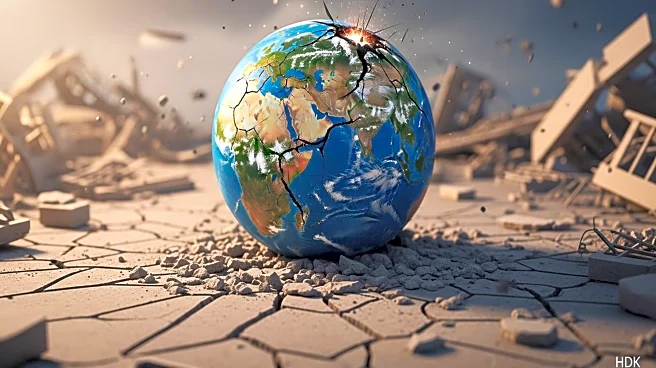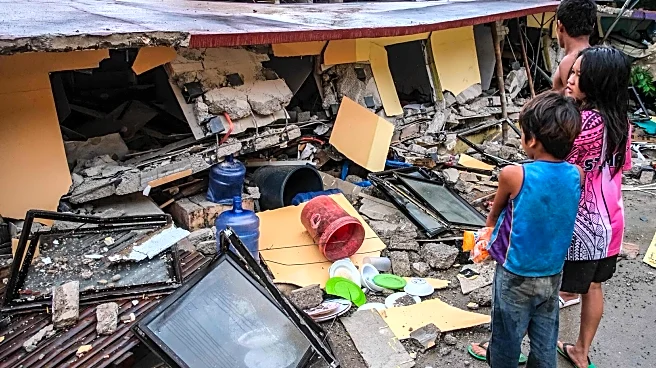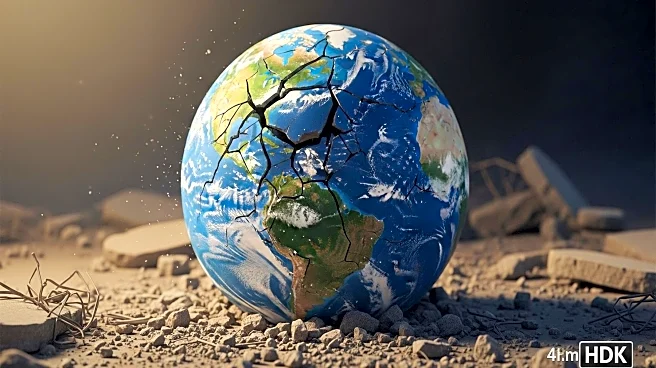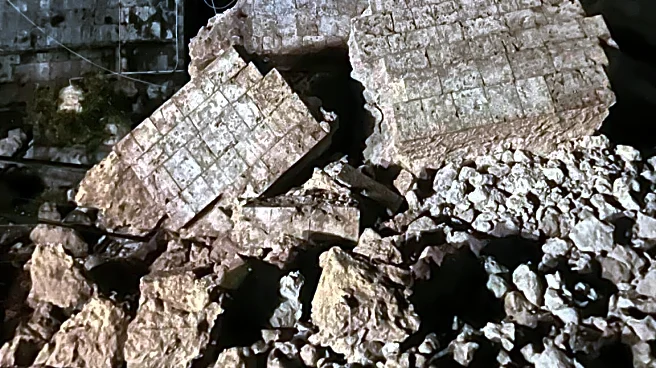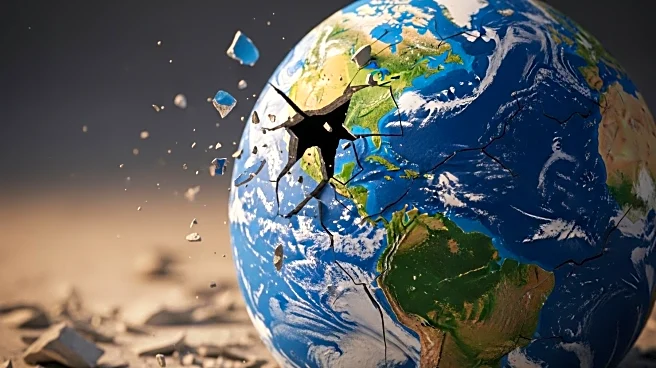What is the story about?
What's Happening?
A powerful earthquake with a magnitude of 6.9 struck the Philippines on Tuesday evening, causing at least six fatalities across Bohol and Cebu provinces. The earthquake occurred just before 10 p.m. local time, with the epicenter located near Calape. The shallow depth of the quake increased the likelihood of strong shaking, leading to significant structural damage. CCTV footage captured the initial moments of the quake, showing buildings swaying and families rushing to safety. Authorities are currently assessing the damage and monitoring for aftershocks, with no tsunami threat reported at this time.
Why It's Important?
The earthquake's impact on Bohol and Cebu, popular tourist destinations, could have economic repercussions, particularly in the tourism sector. The event highlights the Philippines' susceptibility to seismic activity due to its location along the Philippine Sea Plate. The disaster serves as a reminder of the need for robust emergency preparedness and infrastructure resilience in regions prone to natural calamities. The immediate focus is on rescue and relief efforts, but the long-term implications may include increased scrutiny of building codes and disaster response strategies.
What's Next?
Authorities are continuing to assess the damage and coordinate relief efforts in the affected areas. The focus will be on providing aid to those impacted and restoring essential services disrupted by the earthquake. The government may face calls to enhance disaster preparedness measures and improve infrastructure resilience to mitigate future risks. The event could also prompt discussions on the allocation of resources for disaster management and recovery.
Beyond the Headlines
The earthquake may lead to broader discussions on the Philippines' approach to disaster risk reduction and management. There could be increased emphasis on community education and preparedness initiatives to enhance resilience against future disasters. The event also raises questions about the adequacy of current infrastructure and the need for investment in more resilient construction practices.
AI Generated Content
Do you find this article useful?



